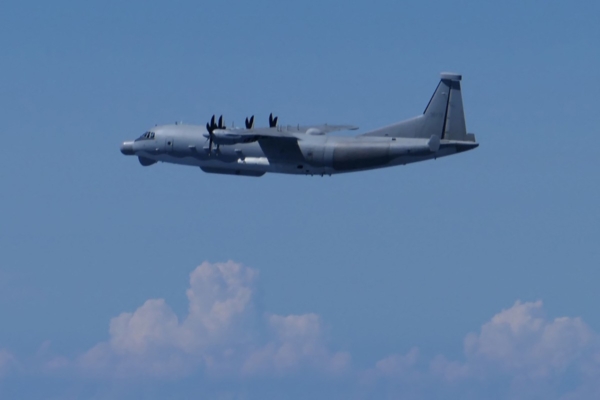Japan is planning to invest billions of dollars to establish a small satellite network aimed at monitoring ships and military bases in response to the repeated pressure from China, including the recent violation of Japanese airspace.
According to a report by The Wall Street Journal, Japan unveiled a new budget proposal on Friday (August 30) for the fiscal year starting in April 2025. This satellite network is part of the next fiscal year’s 8.5 trillion yen defense budget proposal, equivalent to nearly $590 billion, which represents a 7.4% increase from the current year. Under the leadership of outgoing Prime Minister Fumio Kishida, Japan is pushing forward with nearly doubling its defense budget.
Officials stated that this new satellite network aims to provide Japan with enemy positioning information. Currently, Japan heavily relies on intelligence sharing with its main ally, the United States.
China’s activities in the airspace and waters around Japan have been increasingly active, especially near the southwestern islands extending from mainland Japan to Taiwan. According to reports from Japan’s Ministry of Defense, in July and August, a fleet commanded by China’s aircraft carrier “Liaoning” appeared multiple times in the waters south of the Japanese island chain, with fighter jets and helicopters constantly taking off and landing from the carrier.
The Japanese government stated on Monday that a Chinese military aircraft violated its airspace for the first time. Defense Minister Minori Kihara pointed out that this action “not only seriously infringes on Japan’s sovereignty, but also threatens our security.” According to Japanese sources, a Chinese Y-9 reconnaissance aircraft flew into Japanese airspace over the Danjo Islands west of Kyushu for about two minutes. The Japanese Ministry of Defense had to “urgently scramble fighter jets.”
Chinese Foreign Ministry spokesperson Lin Jian stated that the two countries are in communication regarding this incident and that China has no intention of “violating” any country’s airspace.
The tension in the southwestern island chain has been ongoing for many years, escalating at times due to the presence of Chinese fishing vessels or coast guard ships. According to reports from the Japanese military, suspected Chinese drones have been frequently spotted in the airspace over the southwestern islands, including an incident on August 23.
Retired Japanese General and former Chief of Staff of the Air Self-Defense Force Haruhiko Kataoka stated that these satellites will provide Japan with independent target positioning capabilities, rather than relying on the United States for assistance every time.
The Defense Ministry did not disclose how many satellites are planned to be launched, but Kataoka mentioned that hundreds of satellites will eventually be needed to achieve near real-time target positioning.
The Defense Ministry stated that it plans to recruit businesses to invest in and manage the satellite project, with full operations expected to commence in early 2028. Next year’s budget for satellite funding is approximately $2.2 billion. These satellites will be launched into low-earth orbit and will work together to track targets.
Meanwhile, Japan is also introducing missiles with longer ranges to counter threats from China. 400 American-made Tomahawk cruise missiles and an enhanced range version of the domestically produced Type 12 anti-ship missile will begin delivery in early 2026, with some missiles capable of striking targets up to 600 miles away.
Amid provocations from China and North Korea, under the leadership of Fumio Kishida, Japan has for the first time stated that it will attack enemy targets on their territory if faced with threats, marking a historic shift from the defense-only position maintained under the constitution since the end of World War II.
Japan’s defense budget has also allocated approximately $1.4 billion to purchase four KC-46A tanker aircraft developed by Boeing. These planes are not only capable of transporting cargo but also conducting aerial refueling. The Defense Ministry emphasized that these aircraft are crucial for supporting long-duration operations on the island chain.

